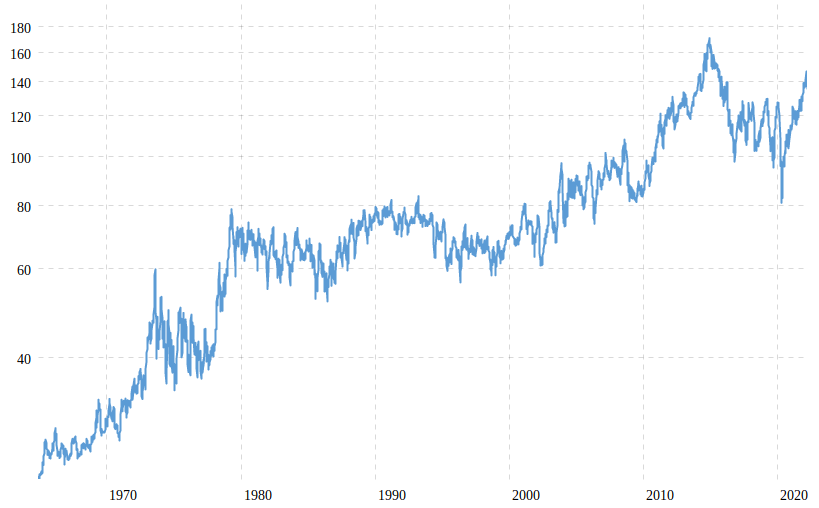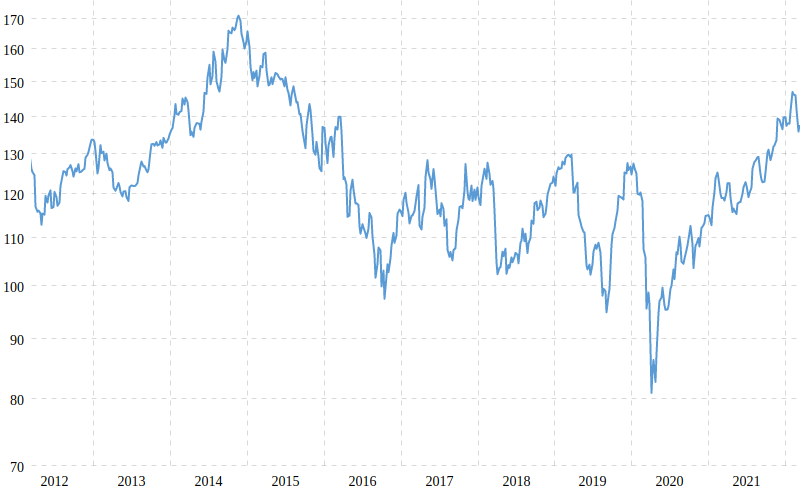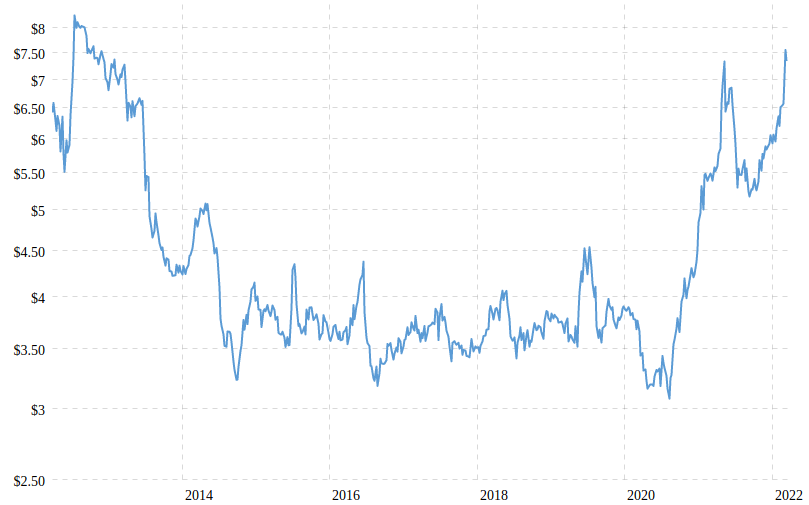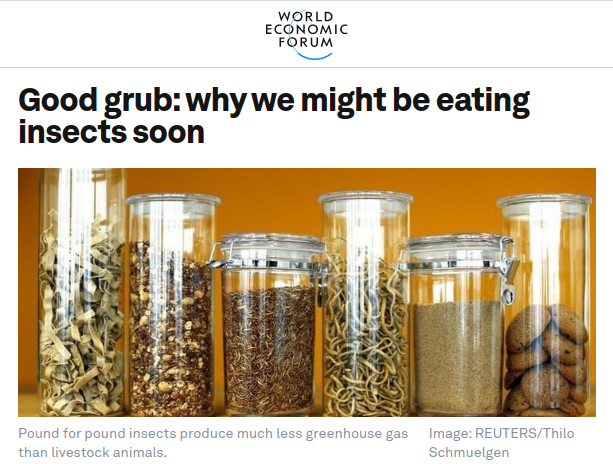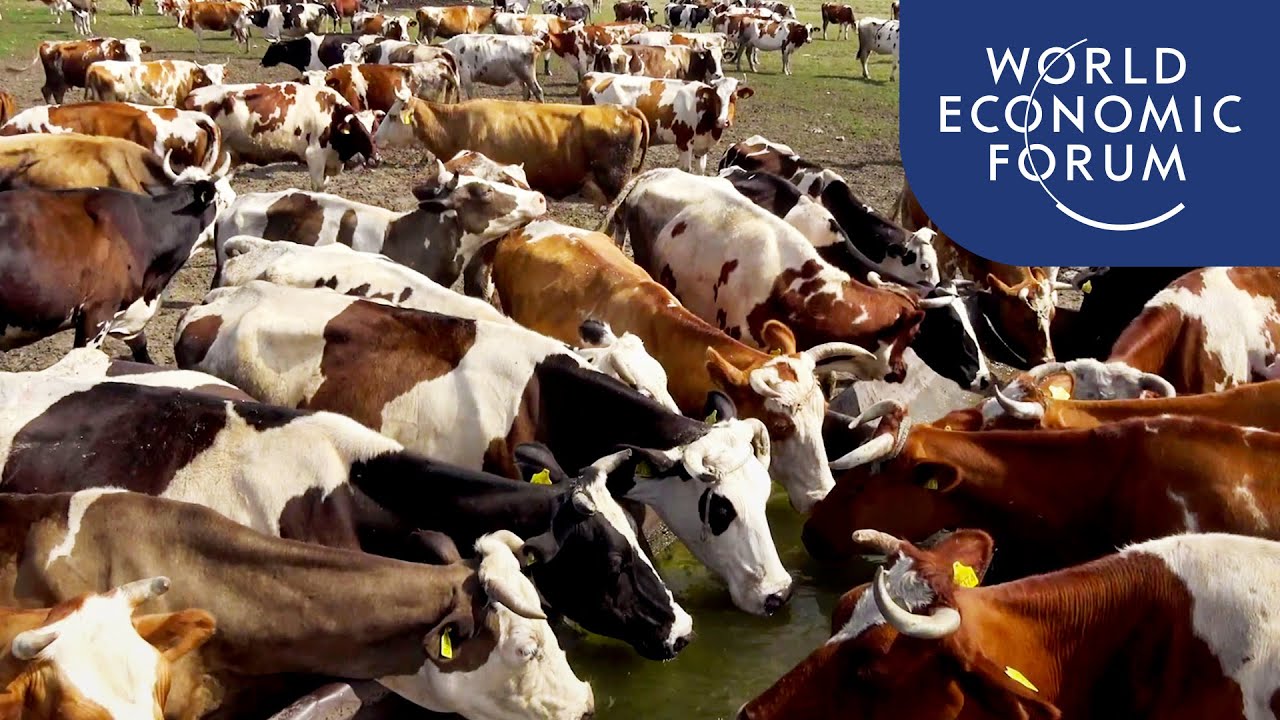Knowing that there are many scientific-minded people here, my approach to things in the news is not going to get a lot of traction here. I come from the legal world, and there we have things that Courts like to call presumptions, e.g., the presumption of parental custody of a child or the presumption that a law passed by Congress and signed by the President is Constitutional. With that said, one of my operating presumptions is that, if the World Economic Forum says that something is good or beneficial, you can bet your entire year’s salary that it is not.
Klaus Schwab, the ultimate Bond villain that heads the World Economic Forum, has as one of his goals to encourage the nearly 7 billion people on this planet who are not lucky enough to be in that super small, super elite club mentioned by George Carlin all those years ago that eating anything other than natural, wholesome animal based (it is telling that we have to use that phrase) protein is not only healthy but also tastes good. Part of the plan to get people to “choose” to eat this synthetic meat is to artificially increase the price of meat to the point where people–who seemingly would not do so otherwise–decide that alternative proteins (the innocuous euphemism for fake meat and bugs) is worth a try. (As an aside, this is also the exact same strategy to get people to buy electric cars and want to switch to “green” energy options.) This plan was explained in a January 2019 white paper published by the World Economic Forum (which Klaus runs) titled “Meat: the Future Series, Alternate Proteins.”
On page 20 of this white paper, the World Economic Forum (WEF) explicitly states that governments should pursue price hikes on beef to encourage people to start looking more toward fake meat. “[T]he demonstrable environmental and health benefits of some products may persuade some governments to facilitate or accelerate their uptake, through regulatory or fiscal intervention, rather than just leaving it to the market (an analogue might be government interventions in the 1990s and 2000s to
promote solar power uptake, for example).” (Emphasis added.) Read that again: “rather than just leaving it to the market.” Basically, KIaus and his merry band of despot thug government stooges knows damned well that, if left to unadulterated market forces, their “Great Reset” crap would be dead on arrival. So, to make it seem as though the alternatives are real and viable, he is encouraging governments to act to force the price up so you and the rest of the middle class in the United States gives up that delicious, God made steak.
I bring this up because recently Bloomberg had a piece titled " Americans May Have to Say Goodbye to Steak and Burgers as Beef Costs Rise." In this piece, the rapid increase on beef prices is blamed on Ukraine and Russia. “That’s in doubt as Russia’s invasion of Ukraine pressures markets. Meat prices are part of what’s behind soaring inflation that’s the worst in four decades, and consumers are getting sticker shock.” That is interesting because inflation has been a topic of consternation among the middle class in the United States since approximately September 2021, if not sooner. Like the gas prices, the increase in price for a product that the Global Cabal has deemed targeted for extinction is being blamed on something that just started two weeks ago. However, much like gas prices, the increased price in beef began almost as soon as Joey Soft-Serve was sworn in as Resident of the White House.
So what is driving the increase in beef prices if it is not Putin? Well, David Frum–yes, that David Frum–has a suggestion. " The theory, expressed most powerfully in a 2019 book by Thomas Philippon, The Great Reversal , is that the U.S. economy is in thrall to a few dominant corporations. In industry after industry, Philippon argued, a few companies have gained the power to keep prices high, wages low, and competitors out. The philosophy of government that follows from this theory is that the government should vigorously police competition, not only by means of traditional antitrust enforcement but also through a broader program of market regulation and intervention." Pay close attention to that last bit: government intervention to “assist” in the price crunch from increased beef prices. Also note that Frum indicates that beef prices have been rising since at least 2019. But Frum explains that the increase in beef prices can be explained by two different theories. First, supply and demand during the COVID shutdowns and other protocols created an inefficiency in the meatpacking industry (the supply side) while demand for beef increased with people eating at home instead of going out to restaurants (the demand side). Second, and you guessed it, government intervention artificially skewing the market prices. Using the analogy of craft brews, Frum states that small meatpacking plants will compete with the big meatpackers in terms of quality as opposed to compete in terms of price, but this approach has its drawbacks. “Smaller meatpackers could likewise compete as alternatives that are more humane to animals—or that deliver organic or grass-fed meat. But that means entering the market at the top, not undercutting from below. And because the main obstacles to this kind of niche competition are regulatory, allowing the niche competitors to grow will demand a deregulatory agenda of a kind very different from what the Biden administration seems to have in mind for meatpacking.”
The increase in the price of beef–and I would posit the increase in the prices of EVERYTHING that the middle class depends on–is a deliberate increase by politicians who are doing the bidding of ol’ Klaus. And it is not a matter of connecting dots. They have told us this is what they are going to do. Part of the Great Reset is to coerce the middle class to give up on the very things that keep us free and healthy. The Great Reset is a forced reset on a large number of people who do not necessarily see the need for such a reset. The rationale given for all of this is “climate change,” but poll after poll shows that “climate change” ranks very near the bottom of issues of concern by the American people. As I stated above, they know that their fake, artificial crap will not be accepted by the people and, therefore, Klaus has to unleash his WEF leaders to implement plans that force the people to make the “right” choice. And in terms of beef, that choice is giving up that New York strip for a nice patty of bug paste. Bon appetite!
